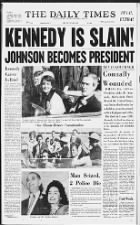Death of President Kennedy - The Oswald Mystery | Facts and Theories
The Assassination of JFK

On November 22, 1963, John Fitzgerald Kennedy aka JFK, thirty-fifth president of the United States, was assassinated during a visit to Texas. While the authorities are wallowing in a suspicious silence, an unusual element feeds the thesis of the plot: the images of the drama, filmed by amateurs, circumnavigate the world.
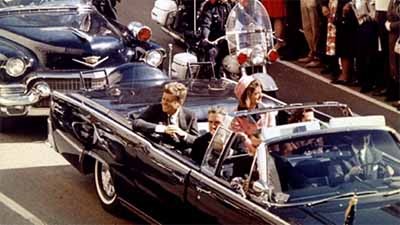
The Zapruder film
November 1963. President John F. Kennedy launches the campaign for re-election the following year with great fanfare. Texas is the first step. In splendid weather, the people of Dallas moved en masse and cheered the procession on its way. Carried by this warm atmosphere, JFK's limousine engages on Dealey Plaza, a huge open place offering the President in the sight of the population. At 12:30, JFK's limousine turns on Elm Street. The sequel, filmed by amateurs cameramen, belongs to the great history of the twentieth century. One of them, Abraham Zapruder, immortalizes the event from his office located on the opposite side of the Texas School Book Depository, the building dominating Dealey Plaza. The Zapruder film will soon travel worldwide. A first detonation sounds. Security guards, thinking they hear the noise of an engine, do not react.
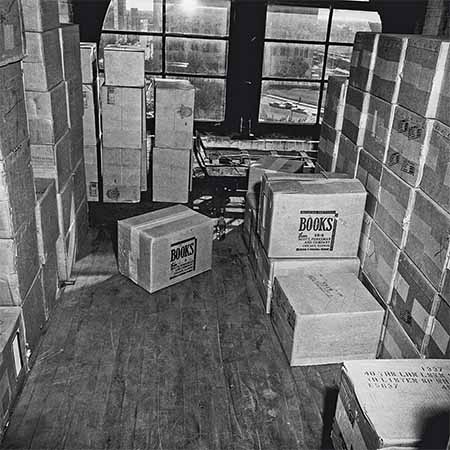
JFK assassination facts
A first shot just touched JFK at the throat. Then a second touches Governor Connally, who collapses in turn, seriously injured in the chest. A third bullet mortally wounds President Kennedy to the head. Clint Hill, the secret service agent, rushes and climbs the limousine to protect the couple, but it's too late. Four shots were fired. The second was fatal to JFK, who lies dead on the bench of the convertible. His wife, Jackie, appalled, tries to escape to the back of the limousine. The death of JFK is officially announced by the White House at 13:33. An hour later, Vice President Lyndon Johnson is sworn in the plane that will bring JFK's body back to Washington. JFK's tragic murder shakes the whole world and plunges America into deep mourning. The dramatic assassination of John Fitzgerald Kennedy makes him an object of worship, eclipsing his mixed political record.
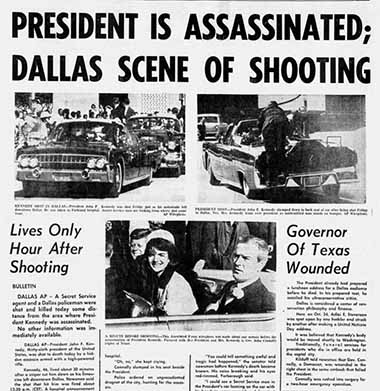
The enigma of Lee Harvey Oswald
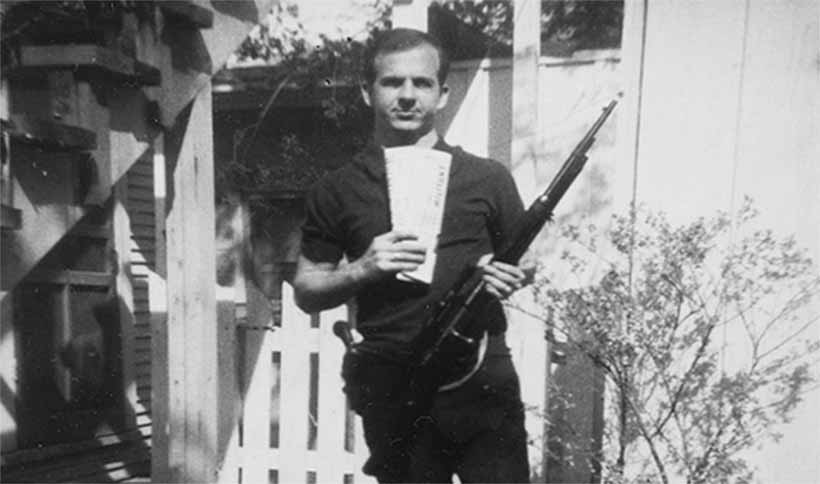
Between 1:00 pm and 1:15 pm, a police officer, J. D. Tippit, on patrol at Oak Cliff, a residential neighborhood a few miles from Dealey Plaza, was shot and killed. He was then looking for a Texas School Book Depository employee declared missing, a certain Lee Harvey Oswald. At 13:50, 70 minutes after the tragedy, JFK's murder suspect is arrested in a movie theater. Charged with both deaths, he categorically denies his involvement.
Lee Harvey Oswald biography facts
Lee Harvey Oswald is a chaotic individual born in New Orleans, he served from 1956 to 1959 in the US Marine Corps, where he shows good marksmanship but sees his progress hampered by his political opinions. A declared Marxist sympathizer, he went to the Soviet Union in 1959 and lived there for two and a half years. Upon his return in June 1962, he moved to Fort Worth, near Dallas, then to New Orleans, where he lives from odd jobs. Disappointed by what he saw in Russia, he became a strong supporter of Fidel Castro. In September 1963, he went to Mexico and tried unsuccessfully to obtain a visa to go to Cuba. Back in Dallas, thanks to his connections, he found an employee position at the Texas School Board Depository, a deposit that distributes educational books. The FBI is interested in him; his trip to Mexico City and the brawl against anti-Castro a few months earlier aroused suspicion. The surveillance and spinning carried out at the time made it possible to identify his associates: Clay Shaw, a businessman, Guy Banister, a former FBI agent who became a private investigator, and David Ferrie, a war veteran and far right activist. On the morning of November 22, Lee Harvey Oswald leaves home; he is seen riding into his car with a long bundle that he declares to be curtain rods.
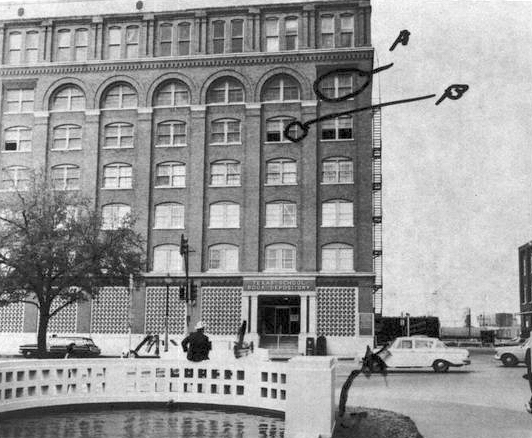
Lee Harvey Oswald trial
For the investigators, the object transported by Oswald on the morning of the crime might well be the Carcano M91 / 38 brand rifle found during a search of the Texas School Board Depository. The course of the weapon is reconstituted: it was bought in March of the same year by Lee Harvey Oswald under the name of "A. Hidell". A partial fingerprint is found on the barrel as well as a fragment of fiber from the shirt worn by Oswald that day. The bullets removed from Governor Connally's body and the two shards taken from JFK's limousine bear the signature of the rifle. In addition, it is the same weapon that in April 1963 was used in General Walker's assassination attempt and a similar model to the one Oswald proudly displayed in a photo taken a few months earlier. The incriminating elements accumulate; only the motive for the crime still baffles police. All their expectations crumble when, on November 24, during his transfer to Dallas State Prison, Lee Harvey Oswald is murdered by Jack Ruby, a nightclub owner. The murderer gives a surprising explanation to his gesture: outraged by the death of JFK, he would have acted on a stroke of madness and would have liked to avoid the first lady the additional ordeal of a trial. Without trial, Oswald's guilt is admitted; however, it has many gray areas. No evidence on the crime scene formally identifies him as shooting or fleeing. People working in the building even claim to have seen him calm and relaxed a few minutes after the assassination of JFK. In addition, it appears that the print on the barrel of the weapon was submitted late, well after the death of Lee Harvey Oswald, and while examinations carried out by the FBI had proved unsuccessful.
JFK assassination theories
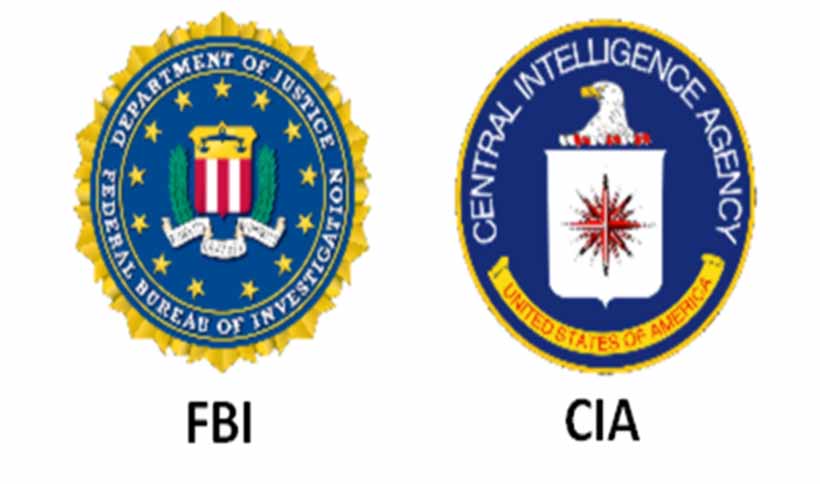
On September 24, 1964, the Warren commission, created by President Johnson, excludes the hypothesis of a conspiracy, whether it is made by Southern extremists, Castroites, communists or political opponents. It concludes at the isolated act of an imbalance. This official version will soon be defeated. In 1976, another Investigative Committee, the United States House of Representatives Select Committee on Assassinations (HSCA), concluded that the investigations of the CIA and the FBI had failed in several respects and that all the information collected from them were not forwarded to the Warren commission. It also accuses the FBI of being negligent in the security of the presidential convoy and then botching the investigation - under pressure from the rumor of director J. Edgar Hoover and several "government officials". The committee considers the hypothesis of a conspiracy admissible. Its arguments are well founded: although Oswald is a seasoned shooter, chaining in a few seconds four shots with a bolt reloading rifle is, in practice, impossible. Three shots out of four being attributed to him, the last is obligatorily the work of an unknown assassin. Just before JFK's murder, several people claim to have seen two men at the fifth floor window of the building. On the grassy knoll bordering Dealey Plaza, witnesses claim they saw smoke, others men in arms. As early as 1966, a "Citizen Investigation Committee" accused the Warren commission "of having drafted its conclusions before considering all the elements" and maintained that President Kennedy was hit by bullets from multiple directions. On the Zapruder film, JFK seems to be hit in the head by two simultaneous shots, one from behind, the other coming from his right.
JFK conspiracy theories
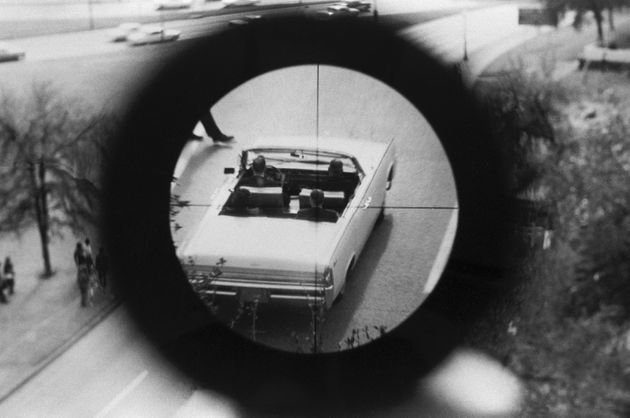
In 1967, New Orleans Attorney Jim Garrison conducted his investigation in secret. In March, he announces the arrest of Clay Shaw for complicity in the assassination of JFK. A witness claims to have heard Shaw, Oswald and David Ferrie - who died shortly before - talk about a plot against the President. But the witness retracts, and Shaw is acquitted in 1969. In 1973, the film Executive Action traces the course of the event of the death of President Kennedy and puts three shooters. The right wing extremist and military-industrial lobbies, opposed to Kennedy's policy of appeasement with the Soviet bloc and dissatisfied with the failure of the Bay of Pigs in 1961, are accused of having ordered JFK's murder. In March 1975, the first television broadcast of the Zapruder film created a shock in public opinion and revived the case. In the same year, the Rockefeller commission attempts to elucidate the origin of the fatal shot and investigates the involvement of E. Howard Hunt, a CIA agent with whom Oswald made contact in Mexico, and Frank Sturgis, another federal agent linked to the mafia. Both would have been present in Dallas at the time of the facts. Published in 1989, High Treason: The Assassination of JFK and the Case for Conspiracy by Robert Groden and Harrison Livingstone, accuses the authorities of having deliberately misplaced the photos of the back of the head of the president, showing a gaping wound that would have credited the thesis of a bullet fired front. To date, more than a thousand books have contributed to the conspiracy theory, trying to explain the respective places of Ruby, Oswald, Shaw and Ferrie on the chessboard of the plot as well as their relationship with the mafia, the CIA, the FBI, the KGB, the far-right, pro or anti-Castro movements, military-industrial groups, and even Vice President Johnson.
